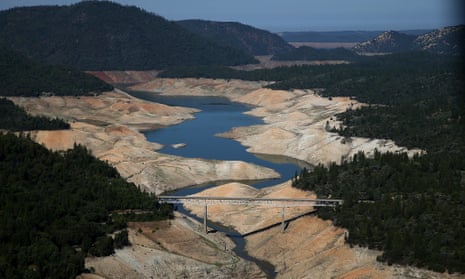Imagine having two bank accounts with money for your everyday needs, only one of them – the one you draw from when the primary account runs low – is a virtual black box. You really have no idea what the balance is, and there is no record of deposits and withdrawals.
This is how water is managed in California, with 38mn people and the world’s eighth largest economy. In years of “normal” precipitation, the semi-arid state gets most of its water supply from winter rain and spring snowmelt. However, when this “primary account” of surface water supply dwindles during droughts, farms and communities rely heavily on a mystery account called groundwater, which truly is out of sight and, unfortunately, out of mind.
Few people have information about the underground stores that provide up to 60% of the state’s water supply during droughts, including water to about 600,000 relatively shallow domestic wells, located mostly in rural areas.
State records that provide information needed to characterize groundwater aquifers are kept confidential under a 64-year-old law that considers them proprietary to well drillers. Known as well logs, the records contain data that is public in every other western state – details such as where wells are located, their depth, potential pumping rates, diameter and descriptions of the groundwater-bearing sediments and rocks they are bored through.
Because the state’s database of 800,000 well logs is not publicly available, local agencies, consultants, academics and communities looking for safe water supplies must develop their own information in order to develop groundwater models, discover the water quality characteristics of a basin, or determine which wells are likely to go dry. Where local agencies can’t afford it, the costs of this restrictive policy have prevented local basin characterization altogether.
Meanwhile, residents reliant on wells are running out of water across the state, from the small farm communities of Orange Center and Easton in the San Joaquin Valley to the foothill communities of the Sierra Nevada. In homes that have run completely out of water, families must use a bucket or a bottle of water to brush their teeth, make coffee, wash dishes, flush a toilet, and even wash their hands.
In the Tulare County town of Poplar, which has a population of 2,500, groundwater levels have dropped so much that the community had to draw from a backup well known to be contaminated with high levels of nitrates from agricultural fertilizer.
And all too often, neither the well owners nor local water managers have the information they need to protect their wells and predict when and where wells will go dry – as the community of East Porterville discovered last summer when more than 600 wells failed. The lack of information is a major impediment to stewardship of the resource.
California wells went dry by the thousands last year and thousands more will follow suit this coming summer, but communities can’t access data about what parts of the groundwater system around them have been tapped, which wells are at risk or what the water quality is. This information is needed to understand how drought and groundwater development impact local water supply and how to respond quickly and effectively. When the state legislature passed historic groundwater legislation last year, it stopped short of changing the law and providing critical information needed for sustainable groundwater management.
The lack of transparent well log data is holding back innovation and solutions at a time when they are needed most. Making these records publicly available would incentivize better data management on this important resource and better science to understand both groundwater supply and pollution. At best, the lack of publicly accessible well logs is slowing down progress toward sustainable groundwater management. At worst, it’s thwarting progress entirely. Making well logs accessible would create opportunities to invest in groundwater management projects and public-private partnerships that will develop more effective and cost-efficient solutions for California’s groundwater.
Over the last year, the state has spent more than $20 million in emergency drought relief to help communities like East Porterville. Without access to the data and tools necessary to prevent acute drought impacts in the state’s most vulnerable communities, however, the intensified drought will cost the state and local residents far more this coming summer.
The California Assembly passed a resolution earlier this month to celebrate “the public’s commitment to openness”. The first line of the resolution reads: “California has a long tradition in support of open government and access to government records”.
Senate Bill 20, introduced by State Senator Fran Pavley in December, would make well log data publicly available in California. Perhaps as more community and farm wells dry up this summer, the legislature will extend its enthusiasm for transparency to the critical information needed for more equitable and sustainable management of our groundwater.
